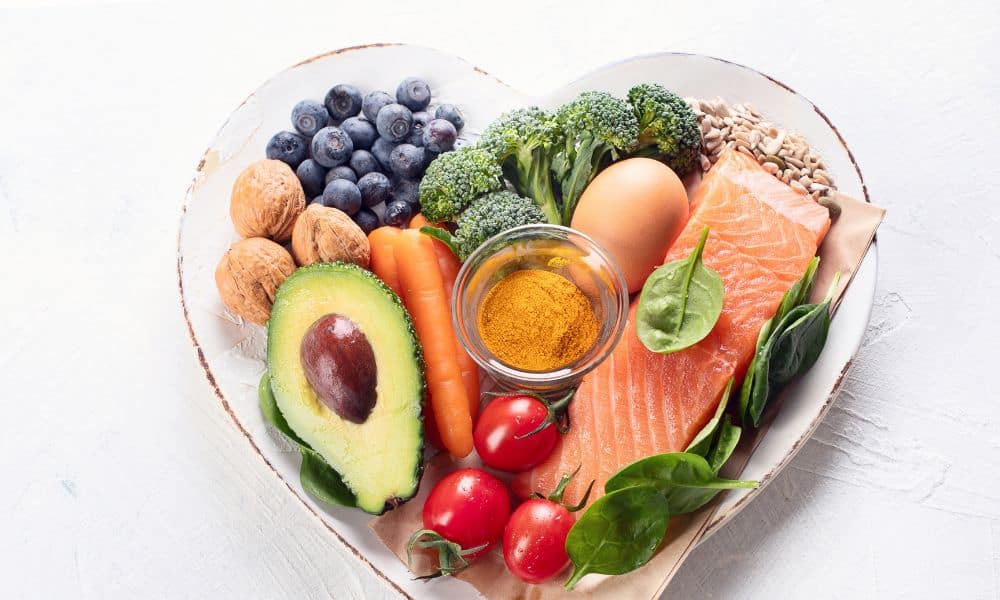You’re either staring at the fridge or thinking about it. Again. But wait—before you reach for that sugary snack, let’s pause. Are you hungry or just craving? The line between hunger and cravings is often blurred, leading to poor choices. This article cuts through the fog of nuances between cravings and hunger, equipping you with the insights to make wiser choices.
What are cravings?
Cravings are your body’s way of saying, “Hey, I want that!” But it’s not always about needing fuel. It’s more about wanting a specific taste, texture, or flavor. Think of it as your brain’s wishlist—a desire for something that isn’t essential but would be nice to have.
What is hunger?
Hunger is your body’s natural signal that it’s time for a refill. Unlike cravings, hunger doesn’t care if you eat an apple or a chocolate bar. It’s a survival mechanism that tells you to replenish nutrients.
What is the difference between hunger and cravings?
Understanding the difference between hunger and cravings is crucial for maintaining a balanced diet and a healthy lifestyle. While both sensations can lead you to the kitchen, they stem from different physiological and psychological triggers. Here’s a closer look into the distinctions:
Hunger is a Physical Need, and Cravings are Emotional
Hunger is your body’s way of signaling that it needs fuel. It’s a survival mechanism that kicks in when your blood sugar levels drop, prompting you to eat. Cravings, on the other hand, are often tied to emotions like stress, boredom, or happiness. They are not about survival but about comfort or reward.
- Hunger: Triggered by physiological needs.
- Cravings: Often linked to emotional states.
- Hunger: Necessary for survival.
- Cravings: More about comfort or reward.
Hunger Grows Gradually, Cravings Hit Suddenly
Hunger usually builds up over time. You’ll first feel a slight emptiness, which gradually intensifies until you need to eat. Cravings are more like unexpected guests. They appear suddenly and demand immediate attention, often leading to those midnight munchies.
- Hunger: Develops slowly.
- Cravings: Appear abruptly.
- Hunger: Allows time for food choice.
- Cravings: Lead to impulsive eating.
Hunger is Satiated by Any Food, Cravings Demand Specifics
When you’re hungry, almost any food will do. Your body is looking for nutrients, not particular flavors. Cravings demand specific tastes, like salty chips or a chocolate bar, and won’t be satisfied with just anything.
- Hunger: Open to various food options.
- Cravings: Require specific foods.
- Hunger: Focused on nutrients.
- Cravings: Focused on flavors or textures.
Hunger Ceases After Eating, Cravings May Persist
Once you eat enough to fuel your body, hunger goes away. It’s a straightforward transaction. Cravings are more complicated. Even after indulging, you might still feel the urge to eat more of the craved food, making portion control challenging.
- Hunger: Stops when physiological needs are met.
- Cravings: May continue despite eating.
- Hunger: Easier to manage portions.
- Cravings: Can lead to overeating.
Hunger Involves Stomach Signals, and Cravings are Brain-Centric
Hunger is often accompanied by physical signs like a growling stomach, low energy, or even light-headedness. These are your body’s physiological cues telling you it’s time to refuel. Cravings, however, are a cerebral affair. They originate in the brain, often triggered by emotional states, memories, or even visual cues like seeing a food advertisement. While hunger is your body’s SOS for nutrients, cravings are more about satisfying a mental or emotional itch.
- Hunger: Manifests through physical symptoms like stomach growls.
- Cravings: Originates in the brain, often emotionally triggered.
- Hunger: Calls for immediate physiological need.
- Cravings: More about mental or emotional satisfaction.
Hunger is Universal, and Cravings are Individual
Hunger is a universal experience. Regardless of age, gender, or culture, everyone knows what it feels like to be hungry. It’s a basic human need. Cravings, however, are highly individualistic. What one person craves, another might find unappealing. Your cravings can be influenced by your upbringing, cultural background, and even personal experiences.
- Hunger: A common experience across all humans.
- Cravings: Highly individual, influenced by personal and cultural factors.
- Hunger: Universal physiological signals.
- Cravings: Unique to individual tastes and experiences.
Hunger Can be Measured, and Cravings are Subjective
Hunger can often be quantified. Medical tests can measure levels of ghrelin, a hormone that regulates hunger. You can also gauge hunger by the time elapsed since your last meal or your physical activity level. Cravings are far more elusive. They don’t have a measurable hormone and can strike irrespective of when you last ate or how active you’ve been.
- Hunger: Can be measured through hormones like ghrelin.
- Cravings: No specific measurable indicators.
- Hunger: Influenced by time since last meal and activity level.
- Cravings: Unpredictable and not tied to measurable factors.
Hunger Aligns with Mealtime, Cravings Don’t Follow a Schedule
Hunger usually aligns with your body’s internal clock and mealtime routines. If you eat breakfast, lunch, and dinner at regular intervals, you’ll likely feel hungry around those times. Cravings don’t adhere to any schedule and can strike at any time, often leading to those or unplanned snackings.
- Hunger: Aligns with regular mealtimes.
- Cravings: Can occur at any time, including late-night.
- Hunger: Predictable based on routine.
- Cravings: Unpredictable, leading to impromptu eating.
How Can You Wisely Respond to Cravings and Hunger?
Decoding the enigma of hunger and cravings can be challenging, especially if you’re trying to fight cravings on a diet. Knowing how to respond wisely to these sensations can make all the difference. Here are some strategies to consider:
Drink Water First Since Hydration Can Often Be Mistaken for Hunger
Before reaching for a snack, try drinking a glass of water. Dehydration can masquerade as hunger, tricking you into eating when your body actually needs fluids. Drinking water can help you discern whether you’re genuinely hungry or just in need of hydration. This simple act can save you from unnecessary caloric intake and help you make better dietary choices.
- Drink a full glass of water: Before considering food.
- Wait a few minutes: To see if the sensation subsides.
- Check for signs of dehydration: Such as dry mouth or fatigue.
- Re-evaluate: Determine if you’re still hungry after hydration.
Wait 20 Minutes to Evaluate True Hunger
If you still feel hungry after drinking water, give it 20 minutes. It takes some time for your stomach to send the “I’m full” message to your brain. Waiting allows you to evaluate whether you’re experiencing true hunger or just a fleeting craving.
- Set a timer: For 20 minutes after initial hunger signals.
- Engage in a light activity: To distract yourself.
- Re-evaluate: Assess your hunger level after the time has passed.
- Proceed wisely: Eat if you’re still hungry; skip if it was a craving.
Opt for Small Protein Snacks to Curb Cravings
When cravings strike, opt for small protein-rich snacks like a handful of almonds or a slice of turkey. Protein makes you feel full for longer, which makes you less likely to eat too much later. It’s a smart way to satisfy your body without derailing your diet.
- Choose protein-rich foods: Such as almonds, turkey, or Greek yogurt.
- Limit portion size: Stick to small servings.
- Note the satiety: Protein keeps you full longer.
- Avoid sugary snacks: They can spike your blood sugar and intensify cravings.
Align Eating with a Consistent Schedule
Consistency is key when it comes to managing hunger and cravings. Try to stick to the same eating schedule each day for your meals and snacks. A consistent eating schedule helps regulate your body’s hunger hormones, making you less susceptible to random cravings. It’s a proactive approach that can be particularly beneficial when you’re trying to fight cravings on a diet.
- Set meal times: And stick to them.
- Plan snacks: At consistent intervals.
- Regulate hunger hormones: Through a consistent schedule.
- Minimize random cravings: By keeping your body’s internal clock in check.
Pre-arrange Healthy Options for Inevitable Cravings
Cravings can catch you off guard. A reliable way to deal with this is to prepare meals in advance. Stock your pantry with healthy options like fruit, whole-grain crackers, or low-fat yogurt. When a craving strikes, you’ll have a go-to list of nutritious choices that won’t sabotage your diet.
- Stock up: Keep healthy options readily available.
- Create a go-to list: Of nutritious foods that satisfy your cravings.
- Avoid temptation: Don’t stock foods that you’re likely to crave and overeat.
- Be diet-friendly: Choose options that align with your dietary goals.
Practice Mindful Eating Without Distractions for Better Satiety
Eating while using your phone or watching TV? Bad idea. Distractions can prevent you from recognizing when you’re full, leading to overeating. Practicing mindful eating involves focusing solely on your food: its texture, flavor, and how it makes you feel. This heightened awareness can help you achieve better satiety and make wiser food choices.
- Eliminate distractions: Put down the phone and turn off the TV.
- Focus on the food: Pay attention to texture and flavor.
- Listen to your body: Stop eating when you feel full.
- Achieve better satiety: Mindfulness helps you recognize fullness quicker.
Confirm You’re Not Mistaking Fatigue for Hunger
Feeling tired can often be mistaken for hunger. Your body seeks an energy boost, and it’s easy to reach for a quick snack when what you might really need is rest. Before you raid the fridge, evaluate your energy levels. If you’re feeling sluggish or have difficulty focusing, try taking a short break or even a quick nap. Confirming that you’re not mistaking fatigue for hunger can save you from unnecessary eating, especially useful for those on a diet.
- Assess energy levels: Are you really hungry or just tired?
- Consider a break: A short rest can often replace the need for a snack.
- Evaluate focus: Difficulty concentrating can be a sign of fatigue, not hunger.
- Opt for rest: Choose sleepover snacks when fatigue is the real issue.
Conclusion
Cravings and hunger are not two sides of the same coin; they’re entirely different currencies in the realm of nutrition and well-being. But now, you’ve got a toolkit of strategies, each designed to help you make smarter choices when hunger or cravings knock on your door. No more mistaking thirst for hunger or falling prey to the siren call of midnight munchies.
Take control, make informed decisions, and elevate your well-being. After all, wisdom in choice is the first step to a healthier you. If you are on a weight loss journey, share this article on Facebook or Twitter to help others learn more about losing weight.




